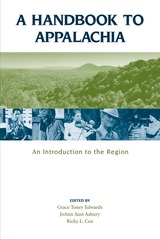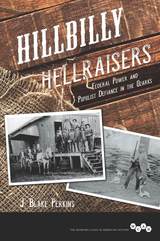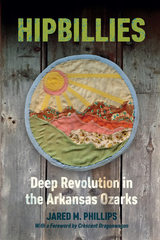8 start with H start with H




J. Blake Perkins searches for the roots of rural defiance in the Ozarks--and discovers how it changed over time. Eschewing generalities, Perkins focuses on the experiences and attitudes of rural people themselves as they interacted with government from the late nineteenth century through the twentieth century.He uncovers the reasons local disputes and uneven access to government power fostered markedly different reactions by hill people as time went by. Resistance in the earlier period sprang from upland small farmers' conflicts with capitalist elites who held the local levers of federal power. But as industry and agribusiness displaced family farms after World War II, a conservative cohort of town business elites, local political officials, and midwestern immigrants arose from the region's new low-wage, union-averse economy. As Perkins argues, this modern antigovernment conservatism bore little resemblance to the backcountry populism of an earlier age but had much in common with the movement elsewhere.



The harmonies of the Fisk Jubilee Singers, the measured brush strokes of painter Lloyd Branson, the intricate basket weaving of Maggie Murphy, the influence of the Agrarian literary movement, and the theater barnstorming of actor-manager Sol Smith—such are the sounds, images, and expressions of Tennessee’s arts legacy.
Through its interlocking themes of tradition and innovation, A History of Tennessee Arts: Creating Traditions, Expanding Horizons traces the story of the arts in Tennessee from its formal, more academic side to its vernacular expressions of culture, self, and community. Both the formal and the vernacular contribute to an understanding of what the arts mean to Tennesseans and, in turn, what Tennesseans have to offer the culture of the state, the region, and the nation. A history of the arts in the Volunteer State becomes, then, an evolving barometer of not only where we have been as a culture, but also how we have matured as a society.
This richly illustrated book, cosponsored by the Tennessee Arts Commission and the Tennessee Historical Society, covers the varieties of art in Tennessee in five parts. The visual arts and architecture section includes chapters on vernacular and high style architecture, sculpture, painting and photography, while the section on craft arts celebrates folk arts such as woodcraft, silversmithing, pottery, and textiles. The section on Tennessee’s rich literary history includes such writers as James Agee, Robert Penn Warren, and Evelyn Scott, while the performing arts are represented by a wealth of storytellers along with two centuries of stage history. Finally, Tennessee is home to—and originator of—much of the music that we know as distinctively American. Contributors to the music section examine gospel, blues, rock, soul, and, of course, country music.
From prehistoric cave paintings to the “cow punk” of Jason and the Scorchers, from the elegant capitol building of William Strickland to Ballet Memphis, and from the unique cantilevered barns of East Tennessee to the chronicles of Alex Haley, the arts in Tennessee truly celebrate traditions and strive to expand our horizons.
The Editor: Carroll Van West is director of the Center for Historic Preservation at Middle Tennessee State University and senior editor of the Tennessee Historical Quarterly.

Winner of the Jackie Kirk Award
Winner of the AESA Critics’ Choice Award
“Blazes new trails in the study of the lives of girls, challenging all of us who care about justice and gender equity not only to create just and inclusive educational institutions but to be unapologetically feminist in doing so. Seamlessly merging research with the stories and voices of girls and those who educate them, this book reminds us that we should do better and inspires the belief that we can. It is the blueprint we’ve been waiting for.”
—Brittney C. Cooper, author of Eloquent Rage
“Nuamah makes a compelling and convincing case for the development of the type of school that can not only teach girls but also transform them…An essential read for all educators, policymakers, and parents invested in a better future.”
—Joyce Banda, former President of the Republic of Malawi
This bold and necessary book points out a simple and overlooked truth: most schools never had girls in mind to begin with. That is why the world needs what Sally Nuamah calls “feminist schools,” deliberately designed to provide girls with achievement-oriented identities. And she shows how these schools would help all students, regardless of their gender.
Educated women raise healthier families, build stronger communities, and generate economic opportunities for themselves and their children. Yet millions of disadvantaged girls never make it to school—and too many others drop out or fail. Upending decades of advice and billions of dollars in aid, Nuamah argues that this happens because so many challenges girls confront—from sexual abuse to unequal access to materials and opportunities—go unaddressed. But it isn’t enough just to go to school. What you learn there has to prepare you for the world where you’ll put that knowledge to work.
A compelling and inspiring scholar who has founded a nonprofit to test her ideas, Nuamah reveals that developing resilience is not a gender-neutral undertaking. Preaching grit doesn’t help girls; it actively harms them. Drawing on her deep immersion in classrooms in the United States, Ghana, and South Africa, Nuamah calls for a new approach: creating feminist schools that will actively teach girls how and when to challenge society’s norms, and allow them to carve out their own paths to success.
READERS
Browse our collection.
PUBLISHERS
See BiblioVault's publisher services.
STUDENT SERVICES
Files for college accessibility offices.
UChicago Accessibility Resources
home | accessibility | search | about | contact us
BiblioVault ® 2001 - 2024
The University of Chicago Press









